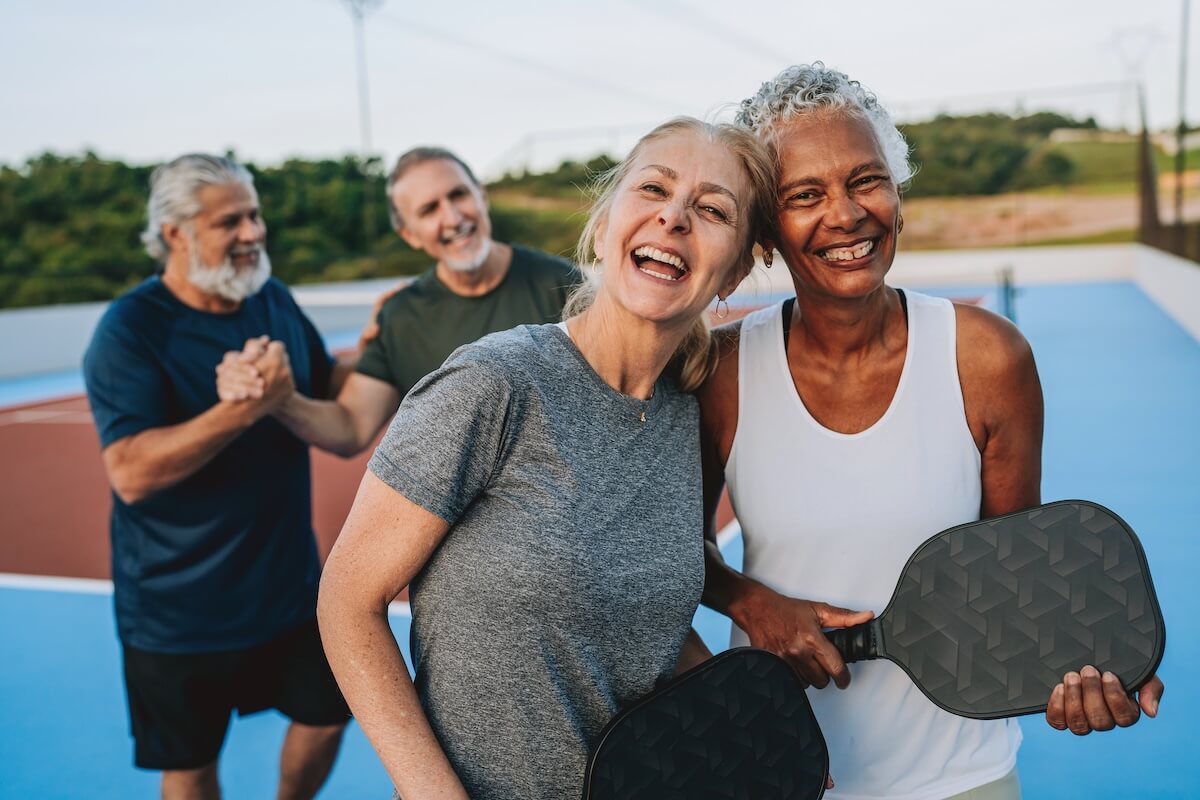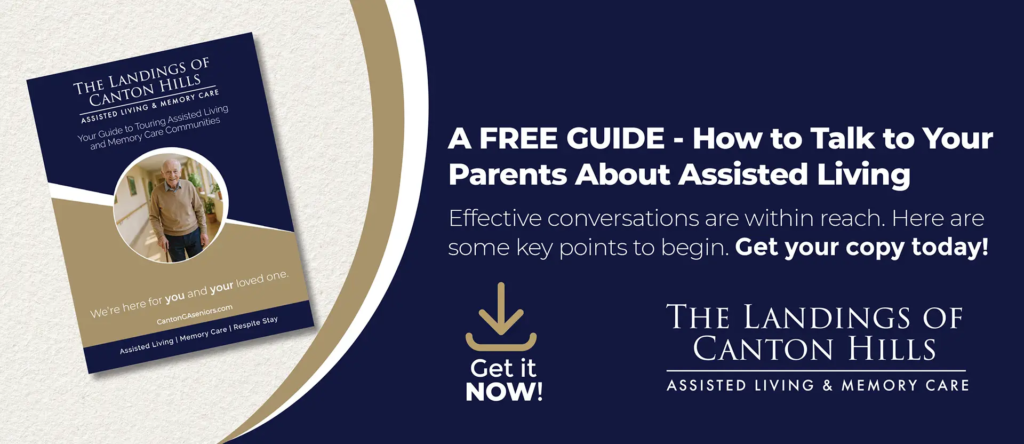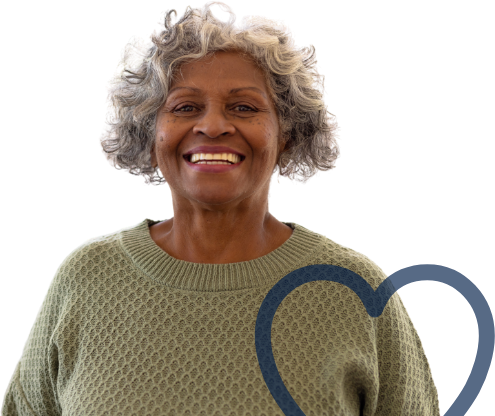The Best in Senior Care
Why Keeping an Active Mind and Body is the Cornerstone of Senior Health

Caring for an aging parent or loved one often centers on ensuring they eat balanced meals, take medications on time, and live in a safe home environment. But a healthy, independent life depends on more than just following through on a few tasks. It’s also the result of consistent physical exercise, maintaining social connections, and engaging the mind with various cognitive workouts.
Encouraging a senior family member to turn off the television, get out of their chair, and move also reassures them that there are people who genuinely care about making their senior years the best years of their life. Your loved one may seem disgruntled over having to miss their regular screen time because you insist on taking a walk with them, but deep down, they are genuinely delighted that you are showing your love for them.
This article provides the science behind the benefits of staying active as we age and why it’s worth the effort to motivate and help your loved one find enjoyable activities that nurture their health and quality of life.
Balance Exercises and Reducing the Risk of Falling
In our 40s, muscle and bone mass begin declining due to reduced physical activity, hormonal changes, and age-related chronic diseases. Consequently, seniors represent the demographic that experiences the highest incidence of fall-related injuries.
A senior’s healthy balance plays a major role in preventing falls. Associated with eyesight, muscle tone, and inner ear health, this sense of balance tells us where the body is positioned in space. Most seniors have some kind of vision problem, whether nearsightedness, astigmatism, or both, which worsens their ability to keep their balance. In addition, inner ear problems like tinnitus, hearing loss, or vertigo can make it even more difficult for seniors to maintain balance.
Fall prevention exercises are intended to strengthen the core muscles—lower back, stomach, leg, and hip—while improving flexibility and joint health. Examples of balance exercises for seniors include:
Walking Sideways
- Stand upright and place your hands on your hips if that feels comfortable.
- Step sideways with your right foot.
- Bring your left foot to meet the right, then pause briefly. Repeat this for 10 steps, then reverse. Begin with your left foot.
- Continue walking sideways for 20–30 steps in total.
Lunging for Balance
- Stand with your feet hip-width apart, hands on your hips, or holding on to a chair, grab bar, or sturdy railing for added stability.
- Step forward with your right foot about two to three feet. Keep looking straight ahead.
- Bend both knees as you lower into the lunge. Your front knee should form close to a 90-degree angle, while your back knee remains just above the floor.
- Push through your feet to rise back to standing.
- Step forward with your left foot and repeat the movement.
- Continue alternating legs for several repetitions. Try to maintain good posture throughout the exercise.
Exercising the Mind and Body—Together
Surprisingly enough, socializing and volunteering in the community may do more to support your loved one’s overall well-being than simple exercise. In fact, numerous research studies indicate that volunteering reduces stress and boosts mood by releasing dopamine, a chemical messenger in the brain associated with regulating motivation, reward, and pleasure. In addition, volunteering allows seniors to interact with others, develop friendships, and enhance their sense of belonging and meaning.
When seniors start losing friends and experiencing more health issues, they tend to isolate themselves from family, neglect good eating habits, and lack the motivation to attend to self-care.
By volunteering or participating in activities with friends and community members, seniors often feel a greater sense of purpose and satisfaction. Regularly seeing familiar faces and sharing experiences brightens their mood, reduces feelings of loneliness, provides accountability, and gives them something to look forward to each day.

Exercise and Disease Prevention
Diabetes
Regular physical activity can help lower the risk of developing diabetes by increasing metabolism and supporting a weight management program. Exercise also helps keep blood sugar levels at acceptable levels, offering excellent protection against common complications of diabetes—stroke, diabetic retinopathy, and nerve damage. Type 2 diabetes among seniors is common, and this form of diabetes has been linked to kidney problems, infections, memory changes, and heart issues. Always consult with your loved one’s physician if they are diabetic and want to begin any exercise program.
High Blood Pressure
A recent study revealed that 70 percent of adults over 65 in the U.S. have been diagnosed with hypertension. Three factors directly contribute to high blood pressure: aging, inactivity, and being overweight.
One of the most effective ways for older adults to manage high blood pressure is to combine regular physical activity with a balanced, low-sodium diet. High blood pressure, even at borderline levels, forces the heart to work harder by tightening blood vessels and placing extra stress on the circulatory system. Staying active helps lower resting heart rate while reducing strain on the heart.
Atherosclerosis
Sedentary lifestyles contribute to a wide range of health problems in adults of all ages, including atherosclerotic vascular disease (ASVD), or hardening of the arteries. Seniors who are not physically active and eat foods high in fat and salt are at an increased risk of their arteries narrowing and becoming less flexible. ASVD restricts blood flow to and from the heart, forcing it to work much harder to circulate blood properly. Over time, excess fat and cholesterol accumulate inside the arteries, increasing the risk of atherosclerotic vascular disease (ASVD), heart attack, and heart failure.
Seniors who stay active through regular exercise are much less likely to develop this problem. Regular physical activity and eating healthy foods support unrestricted circulation by reducing the buildup of fatty deposits in arteries.
Brain Food for Mental Wellness
To help promote your loved one’s cognitive health, try selecting from this list of brain-boosting activities seniors enjoy:
- Crossword puzzles, word search, Sudoku, or number games
- Reading books, magazines, or newspapers
- Writing letters, journals, or memoirs
- Playing chess, checkers, or card games (a great way to socialize!)
- Learning a new language or how to play an instrument
- Listening to and discussing podcasts or lectures at senior centers
- Putting together jigsaw puzzles
- Practicing memory games (matching, recall exercises)
- Trying brain-training apps or computer games
- Learning a new recipe or cooking technique
- Gardening (requires planning, ongoing care, and problem-solving skills)
- Painting, drawing, or other creative arts
- Attending classes or workshops (in person or online)
- Meditation and mindfulness practices that strengthen focus
You could call your local Council on Aging or health and human services center to find out if they have information about planned activities for seniors in the area. Most towns and cities offer free transportation for seniors over 60.
Better Sleep for Seniors
Lack of quality sleep is a common complaint of seniors. Sleep troubles in older adults are often related to changes in the body’s internal clock, leading to shorter, lighter sleep cycles, health problems, certain medications, and reduced physical activity.
Poor sleep interferes with the immune system’s ability to fight infections by reducing white blood cell counts. Insomnia or waking up repeatedly during the night also increases daytime irritability and can contribute to depression and anxiety symptoms. Studies show that when you don’t get a good night’s sleep, your body “thinks” you are dealing with stressful conditions. Consequently, extra cortisol is released to increase energy levels and keep you more alert. Over time, consistently high cortisol from lack of sleep may raise blood pressure, impair memory, and depress mood.
Here are some tips for your senior loved one that may help improve their sleep quality:
- Try keeping a regular sleep schedule by going to bed at the same time every night.
- Don’t use your bed for eating or watching TV.
- Drink your last cup of coffee or tea at least six hours before going to bed.
- Get enough physical activity during the day. Try walking or bicycling at least 20 minutes in the late afternoon.
- Hang “blackout” curtains in your bedroom. These window treatments are made of fabric that blocks out UV rays and muffles noise.
- Read a relaxing book at bedtime (not a Stephen King novel!).
- Don’t nap during the day. If you feel yourself wanting to sleep, get up and get out—walk the dog, mow the grass, visit a neighbor, volunteer, or start a home project.
- Practice meditation techniques that can help a “racing” mind slow down at bedtime.
It’s Never Too Late to Improve Mind and Body Health!
Helping an older loved one remain physically and mentally active goes beyond toe touches and sit-ups. It’s about giving them the confidence to live life to the fullest by staying engaged physically, mentally, and socially. With your support, they can find the motivation and encouragement to maintain and protect their independence and live a healthy lifestyle at any age.

